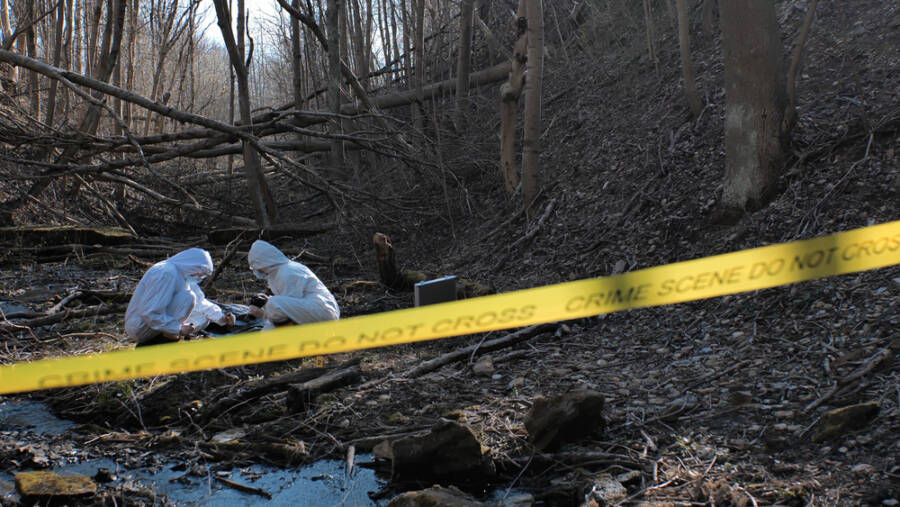Do you know the American trends that shaped people’s lives between 1920 and 1940?
America and its youth, in particular, got involved in a lot of activities during the period between WWI and WWII. Same as today’s generations, they wanted to be different from their parent’s generation, and this wasn’t exactly a bad thing. However, many historically significant events led to some equally distinctive teen crazes during the 1920s through the 1940s.
For example, prohibition brought a huge cultural shift in tandem with the post-war boom of the 1920s. People had a lot of time on their hands but no money to do something for fun because of the Depression’s poverty and low employment. But as soon as the economy got a boost and things were slowly getting back to normal, the nation was thrown into yet another world war.
Despite facing tremendous hardships, human minds remain creative and manage to have fun, often cracking jokes along the way. Americans were no exception, so even if they were forced to endure yet another round of sacrifices, they were also inspired to engage in some rather strange hobbies.
In today’s article, we will have a pleasant journey through time and discuss a bit about all these American trends that shaped the 20s until the late 40s in a way that may seem strange now. But hey, you should also remember that fun and trendy stuff that we’re into today will probably seem outdated in a week or so. Are you ready to have some fun with this article that feels like a time machine? Onwards!

Drive-in movie theaters
Feeling nostalgic yet? I bet you do. Drive-in movie theaters are just a staple for the American nation, but did you know how it started? In the 1920s, silent film screenings in parks and other public areas gained popularity as a sort of fun community event.
However, at first, logistical issues prevented outdoor films from becoming a successful business venture. Then, in an attempt to increase sales at his auto parts company, Richard Hollingshead began projecting movies onto a makeshift screen and inviting customers to watch from their cars sometime in the early 1930s. Hollingshead opened the country’s first official drive-in movie theater in 1933 as a result of how well-liked these events were.
Before home video technology began to undermine the medium’s support, drive-in popularity peaked in the 1950s and 1960s. Too bad that this is one of the American trends that disappeared and future generations won’t be able to experience it.
Goldfish gulping
…And the reason for this American trend? It’s still unknown. Some folks say it was to impress other people, to gross people out, or maybe to boost your luck. Who knows… However, this was something that happened back in 1939, when Lothrop Withington, Jr., a Harvard freshman and proud bearer of the most Harvardy-sounding name ever, took a $10 wager that he wouldn’t ingest a live goldfish.
The interesting thing for that time is that the “trend” spread so fast among other students, even without social media, and soon everyone (literally) started doing it. What if they wanted to boost their health and increase their daily dose of omega-3 fatty acids?
Luckily, the US Public Health Service issued a warning because it was unsafe to do so, so this was one of the American trends that only lasted three months.
Playing Mah-Jongg
This is one of the American trends that’s still alive in today’s world; the only difference is that now it’s been digitalized. But when did all this craze start? Well, of course in the 20s, and it was a huge thing for Americans at that time.
In that year, Mah-Jongg tile sets were first carried by Abercrombie and Fitch in their New York stores, and Joseph P. Babcock published his book Rules for Playing the Genuine Chinese Game Mah-Jongg. Soon, game nights all over the United States featured the game, which combines skill, luck, and occasionally gambling.
Mah-Jongg nights transformed into fun and lively Chinese-themed parties! People dressed in beautiful traditional outfits served delicious Chinese food, and enjoyed lively Chinese music, all while having a great time together. At the time, what appears to be a blatant instance of cultural appropriation was most likely less cruel.
For many Americans, this was their first exposure to any form of Eastern culture, and Mah-Jongg might have even contributed to the gradual bridging of the divide between the two cultures. Do you play this game and keep the tradition alive? If so, how often?

Miniature golf
As a fan of miniature golf myself, I am happy that this is among the American trends that are still present in today’s world. And you don’t have to be a gnome to play it! Jokes aside, let’s talk a bit about how it started.
When Garnet Carter established his “Tom Thumb” golf course in Lookout Mountain, Tennessee, in 1927, he wasn’t merely constructing a scaled-down version of a larger course. He incorporated goblins, gnomes, and challenge elements to produce an entirely original gaming experience that quickly gained a lot of popularity.
Mini-golf courses quickly appeared indoors, in urban areas, or even on rooftops. It was a hype and everybody loved it! The fact that the game could be enjoyed by those who couldn’t make it to a real golf course, and without having to pay annoying country club dues made it super popular.
For a while, miniature golf was essentially killed off by the Depression, but it kept reviving like the blades of a tiny windmill. It was a good thing because timid guys will always need a place to go on a first date, and committed golfers will always need a place to hone their skills.
Victory gardens
Who remembers the propaganda posters from the end of World War I? The initiative, created by the Canadian Ministry of Agriculture, encouraged civilians to grow their fruits and vegetables. Slogans like “Sow the seeds of victory!” and “Every garden a munition plant!” were used in the campaign, which was initially successful.
However, once WWII ended, people said that the program was no longer needed and stopped tending it. But this wasn’t exactly the best idea because this is one of the American trends that did a lot of good for the country’s agriculture and economy. That’s why after it ended, there was a temporary shortage of fruits and vegetables in the agricultural sector.
Collecting stamps
Another American tradition that’s still preserved in today’s world, not literally because I don’t know how many folks are still collecting stamps now, but the idea of collecting items is still widespread.
In the early 1930s, people in America really began to enjoy the fun hobby of collecting, sorting, and showing off different kinds of postage stamps. It was a great way to connect with others and share a bit of history! Okay, maybe that’s a bit strong. But even President Franklin Roosevelt had his collection, and according to his son, it was a pretty impressive one.
Are you nostalgic about those times when you played Mahjong with your friends on Sunday evenings? I know that now you can still play it, but in digital form, wouldn’t it be nice to have one in physical format? The classic mahjong is available on Amazon for $24.46. Everyone can play the game, including kids over 8 years old. It will be a blast!
Swing dancing
Fortunately, this is one of the American trends that sparked a long while ago (around 1920), and it’s around in today’s world. The Jazz Age lasted roughly from 1920 until a particular incident in 1929 that, let’s say, lowered everyone’s spirits. The Charleston, Lindy Hop, Balboa, and Collegiate Shag were among the dances that brought together nimble youths during this time as waves of dance fads swept across America.
Swing dancing was all about having fun but also having coordinated moves and athletics as well since you had to lift, spin, and toss your partner. People learned the rules of the dance pretty quickly, and everyone except the old people loved it.
I want to know how many of our readers can confirm these American trends. It will be a nice discussion for sure, so don’t be shy; let us hear your thoughts in the comments section below.
Meanwhile, you may also like 6 Common American History Misconceptions.





